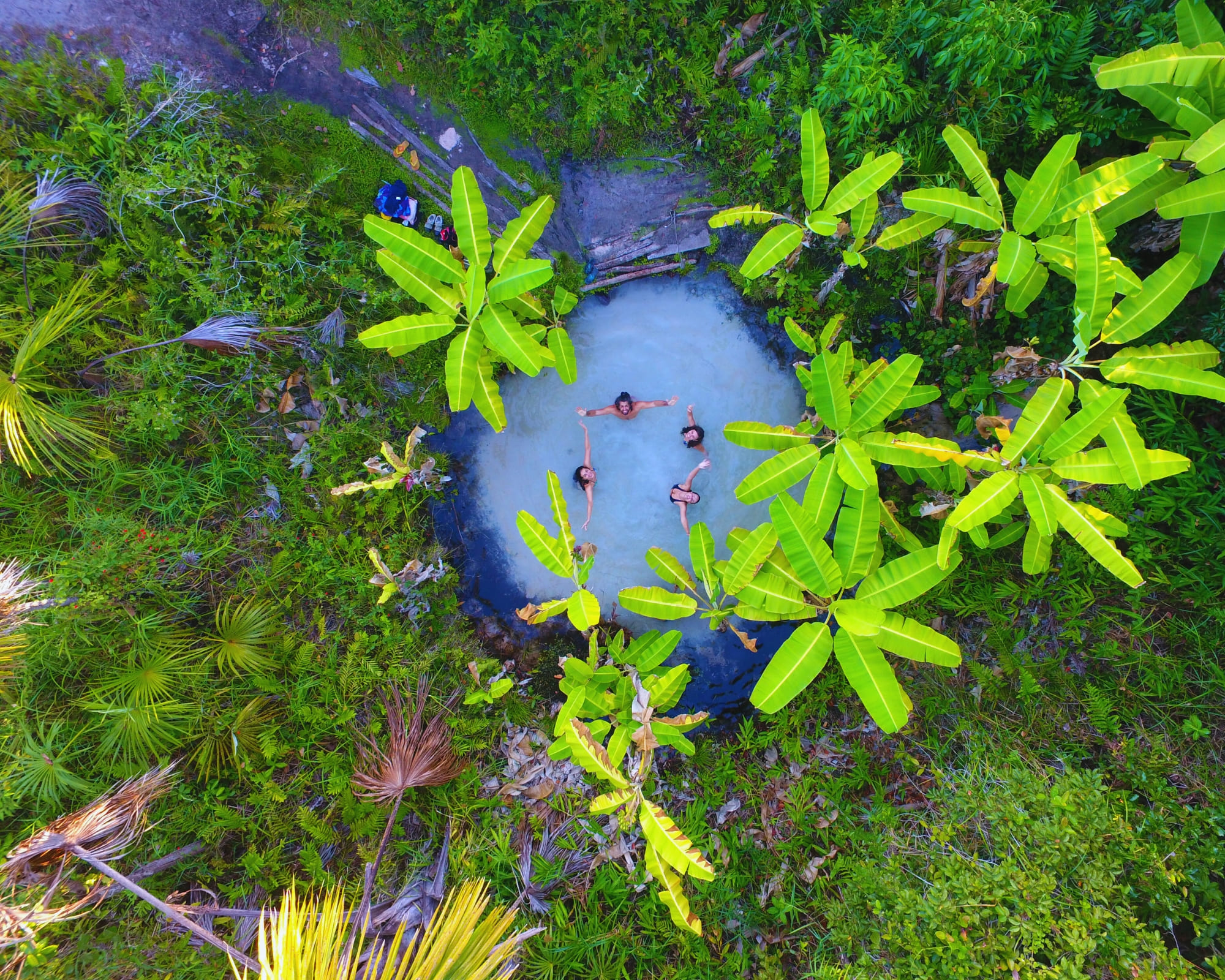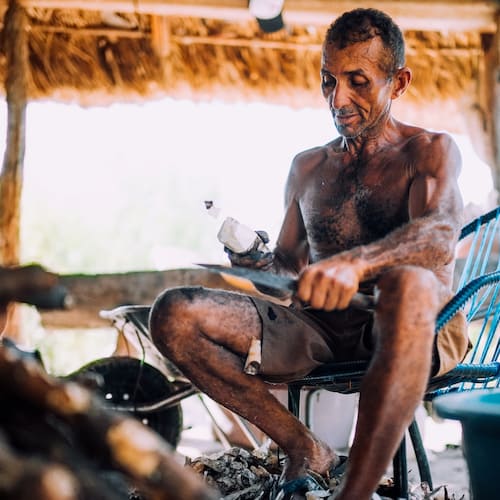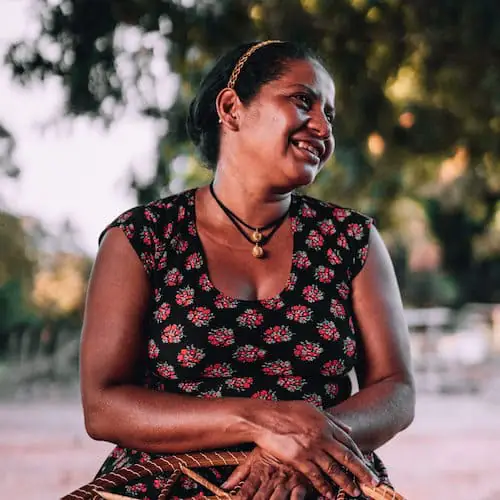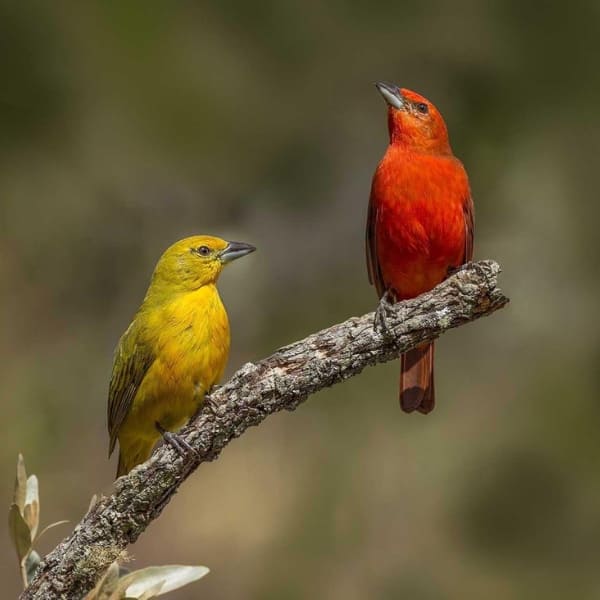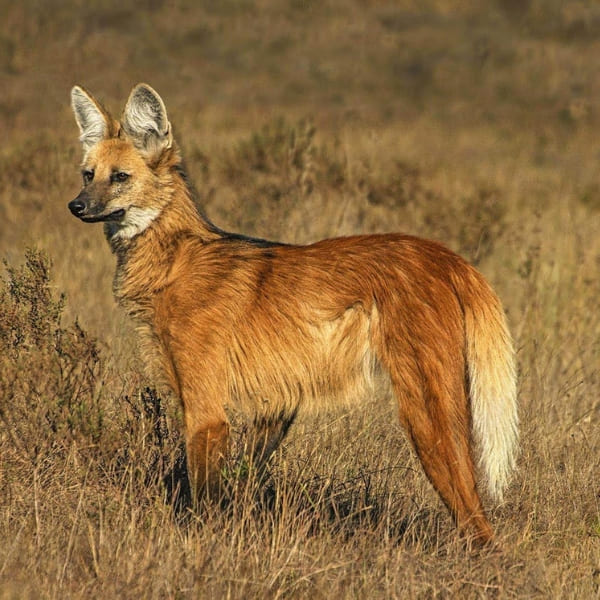Uncover Jalapão, where golden grass, bubbling springs, and desert-like dunes create one of Brazil’s most distinctive landscapes
Known for its remote beauty, Jalapão is a place where rivers form crystal-clear springs, sand dunes rise in the middle of the savanna, and communities preserve centuries-old traditions. These features make it a paradise for those who love both adventure and culture.
But beyond its natural scenery, Jalapão carries stories that surprise even the most experienced travelers. From the formation of its fervedouros to the craftwork of capim dourado and the history of the quilombo territory, every detail has a tale to tell.
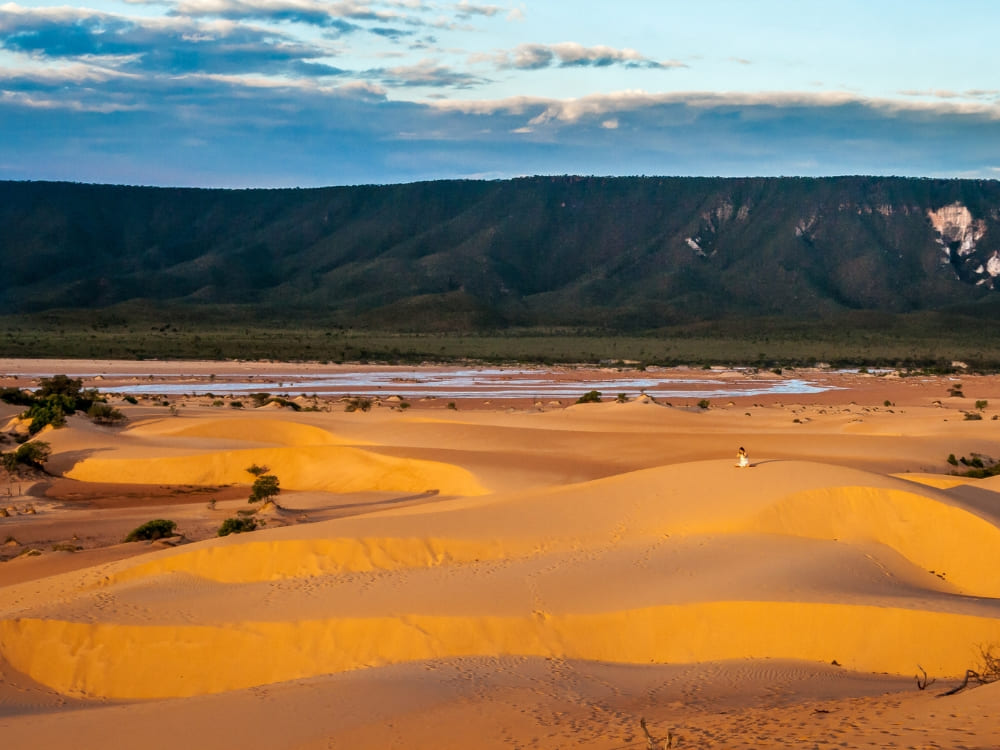
Photo: Rodrigo José Fernandes
For ecotourism and community-based travel lovers, Jalapão is unmissable. With PlanetaEXO, travelers can explore responsibly: supporting conservation, valuing local traditions, and experiencing authentic adventures in Brazil’s savanna.
Curious to learn more? Check out these 10 facts about Jalapão that reveal why this destination has captured the hearts of nature lovers and ecotourists worldwide:
1. The largest State Park in Tocantins
Did you know the Jalapão State Park was created in 2001 and covers about 158,800 hectares? It is the largest state park in Tocantins and a vital part of the Cerrado, South America’s largest savanna.
The park’s territory extends mainly across the municipalities of Mateiros and São Félix do Tocantins, protecting dunes, springs, waterfalls, and vast wildlife corridors. It is considered one of the most important conservation units in the Cerrado, a biome that has lost large portions of its native vegetation in recent decades.
For travelers, visiting Jalapão is also about witnessing conservation in action. The park stands as a symbol of protecting the Cerrado while offering one of Brazil’s most authentic ecotourism experiences.
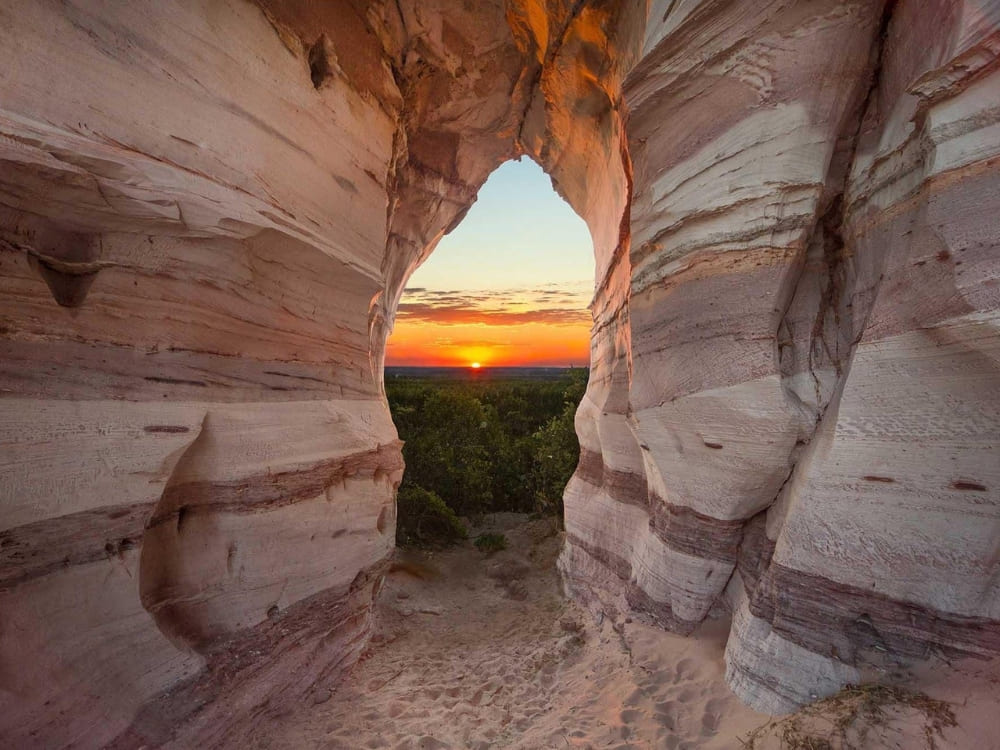
.
👉 Want to explore other preserved areas? Read our blog on The Best National Parks to visit in 2025
2. Jalapão Fervedouros and a desert that is not a desert
How can water bubble endlessly from the ground without ever drying up? The Jalapão Fervedouros are natural karst springs formed when underground rivers push water through fine sand with high pressure. This constant upflow makes the surface bubble and creates a buoyancy effect so strong that it’s impossible to sink.
The water in these pools is exceptionally crystal clear, ranging from turquoise to cyan, making them some of the most photogenic spots in Brazil. To protect them, rules are strict: a maximum of 8 people at a time, 20 minutes per group, and no sunscreen allowed before entering.
And what about the so-called Jalapão Desert? Despite the name, it isn’t a true desert, of course, with so many water sources. The dunes, formed by sandstone erosion, rise up to 40 meters and stand beside rivers and vegetation, creating a beautiful real and nature painting.
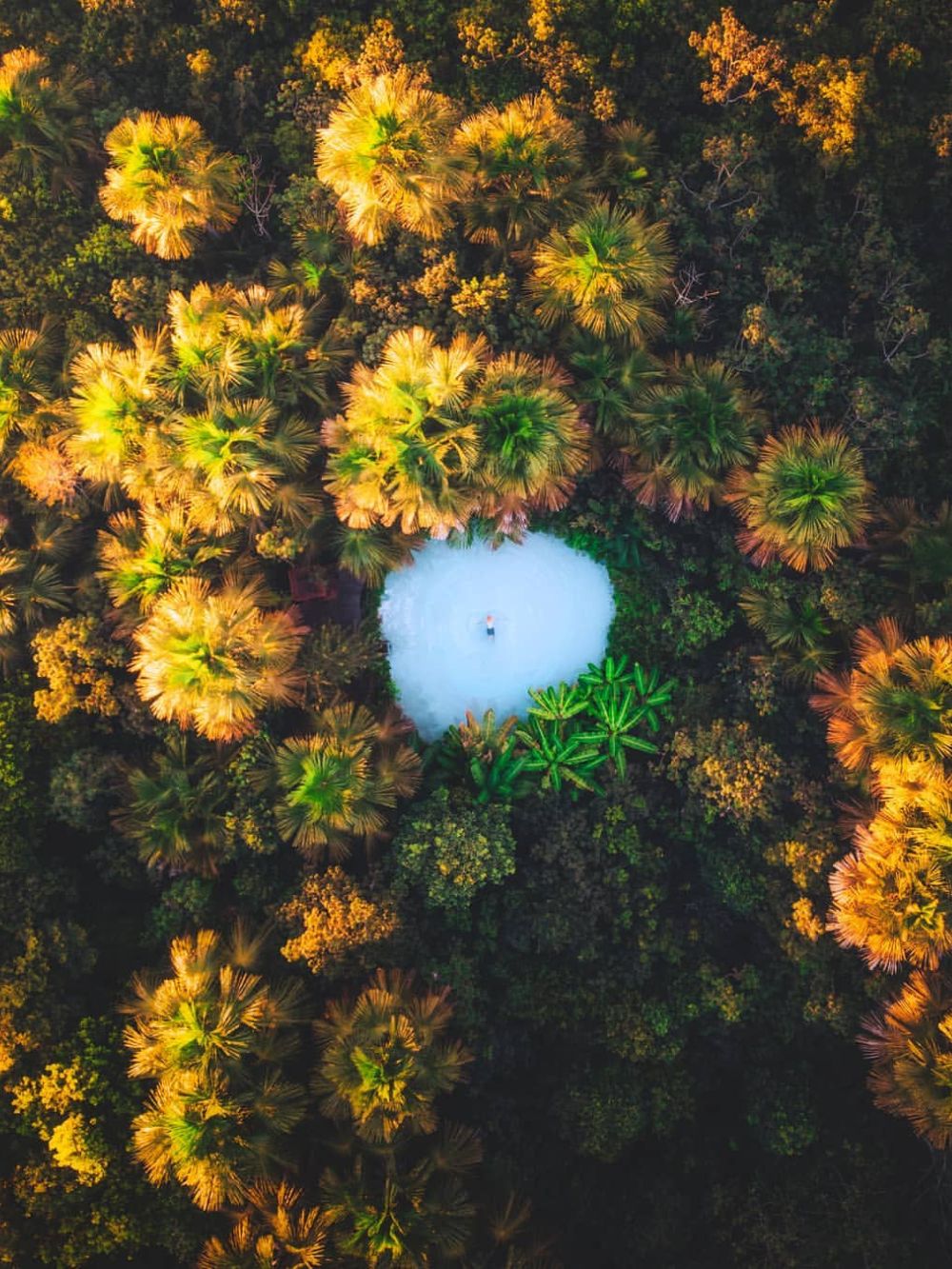
.
👉Curious about similar phenomena? Read our post about How the Dunes of Lençóis Maranhenses are formed to discover another natural wonder of Brazil
3. In the heart of Tocantins: Quilombola history and traditions
The Rota Quilombola connects three communities in Jalapão: Mumbuca, Prata, and Rio Novo. These villages originated as forms of resistance during Brazil’s colonial period, when quilombos became safe havens for freedom and cultural preservation.
Today, they safeguard traditions, crafts, and stories that make the region both a cultural and natural treasure.
In Mumbuca, travelers discover the art of Jalapão Capim Dourado with local artisans. In the town of Prata, rapadura, traditional sweet made with sugarcane, cachaça with cerrado herbs, a Brazilian distilled drink also made with sugarcane, and organic farming show the connection between food and culture. Rio Novo holds oral histories of freedom and settlement by the river.
Visiting these communities means sharing experiences. From workshops and music by the fire to local recipes and river dips, the Rota Quilombola invites travelers to support sustainable tourism while learning about living history.
- .
- .
4. Jalapão’s geology: A region that was once a sea
Did you know that millions of years ago, Jalapão was covered by an ancient sea? The park’s rock formations, plateaus, and canyons are remnants of this prehistoric landscape. Sandstone walls, eroded over millennia, still reveal marine fossils and ripple marks.
This geological past explains the presence of wide sandy areas, eroded cliffs, and fertile valleys. The constant action of water and wind shaped the land into the unique combination of dunes, rivers, and springs we see today.
Travelers walking through Jalapão are essentially crossing what was once the seabed. Next time you hike its trails, imagine that the golden sand under your feet was part of a vast ocean floor.
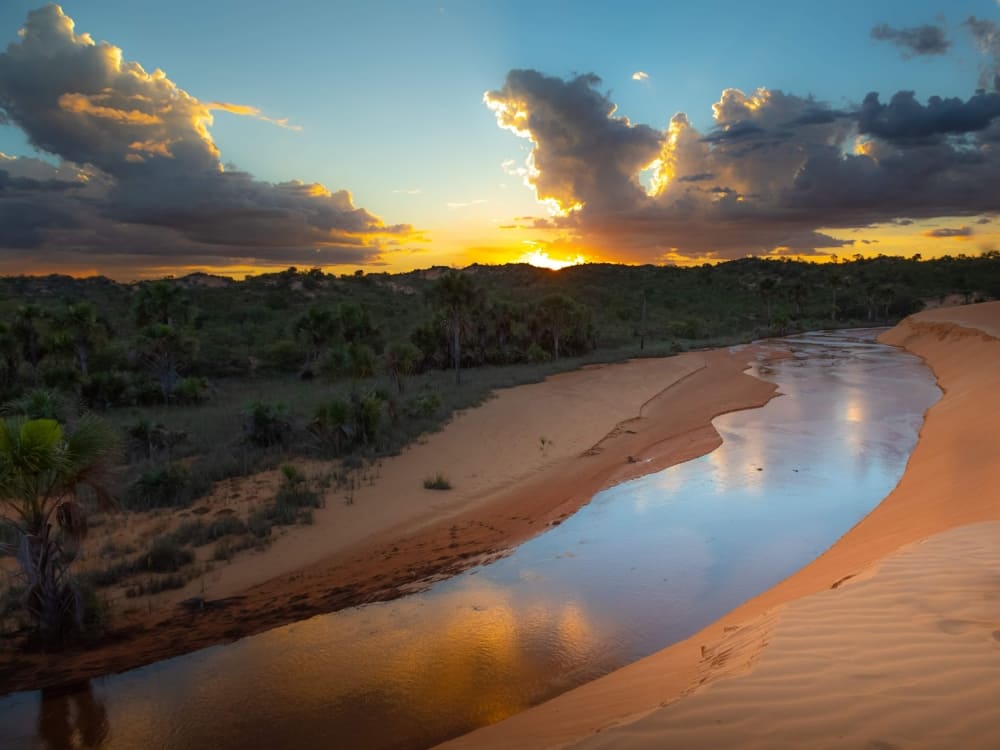
.
👉 Ready to explore this geology in person? Check out our 4-day trip from Palmas
5. The origin of the name “Jalapão”
Where does the name “Jalapão” come from? According to historians, it is linked to a local plant called “jalapa,” once abundant in the region. This medicinal root was used for its healing properties and became a reference point for travelers and residents.
The suffix “ão” in Portuguese suggests vastness, so “Jalapão” can be understood as “land of jalapa in abundance.” The name reflects both the natural resources of the past and the richness of today’s landscapes.
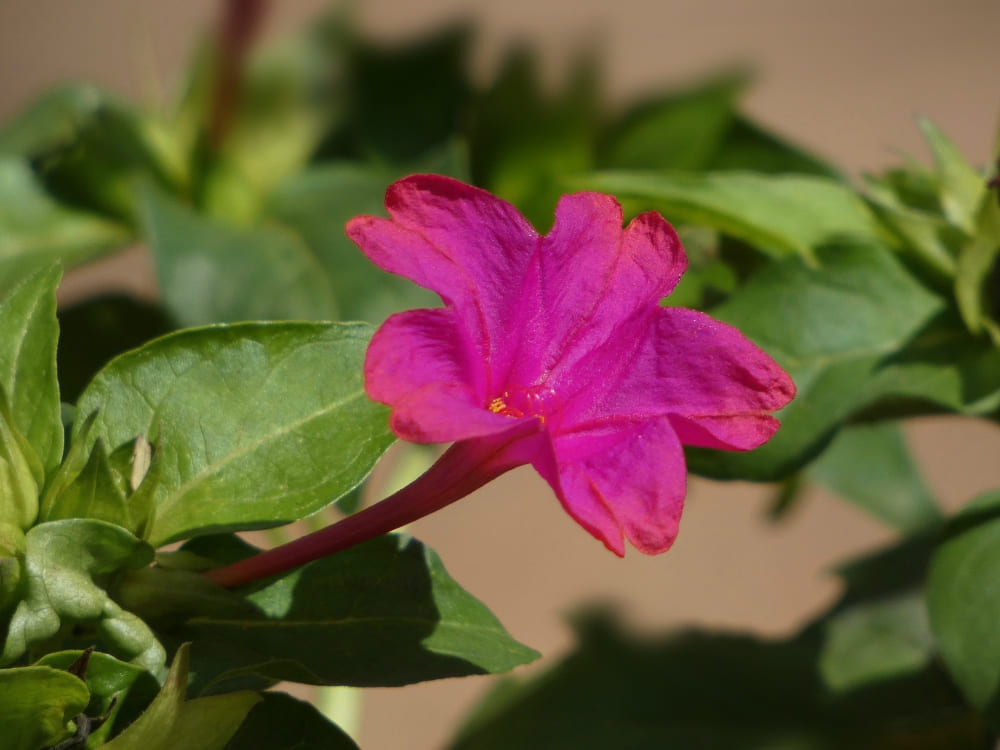
Photo: Linda De Volder
6. The only Safari Camp in Brazil
Jalapão is home to the only safari camp in Brazil. Inspired by African safari lodges, this style of accommodation combines comfort with immersion in nature. Guests stay in tents equipped with beds and private areas, often near rivers or springs.
Unlike traditional hotels, safari camps allow you to hear the sounds of the Cerrado at night, watch the stars in an open sky, and wake up surrounded by untouched wilderness. It’s a wonderful way to experience Jalapão’s landscapes.
This accommodation model also supports sustainable tourism, limiting the environmental impact while providing jobs for local communities.
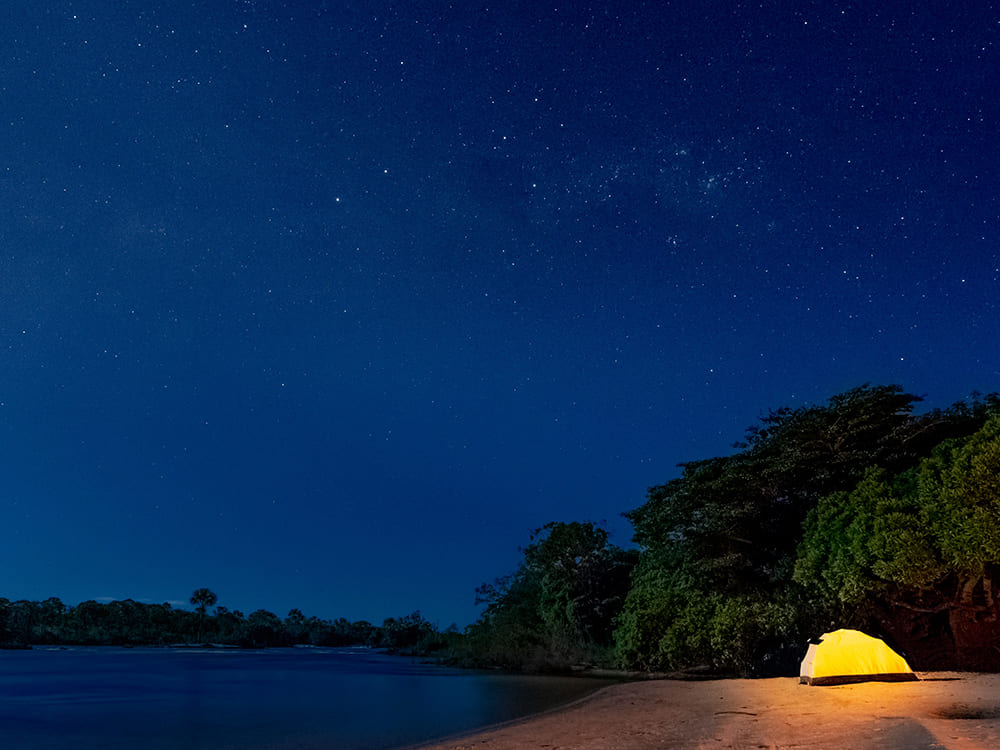
.
👉 Want to know what else to do in the region? Read our blog post on What to do in Jalapão
7. Fervedouro Bela Vista reaches 35 meters in depth
While most fervedouros are shallow, Bela Vista can reach up to 35 meters in depth. Yet, thanks to the constant upwelling of water, visitors still cannot sink and experience the unique sensation of floating effortlessly.
The pool’s turquoise color and perfect circular shape make it one of the most photogenic spots in Jalapão. Surrounded by buriti palms, it looks like a hidden oasis in the middle of the savanna.
To preserve it, access follows the same conservation rules as other springs: limited groups, short bathing times, and environmental care.
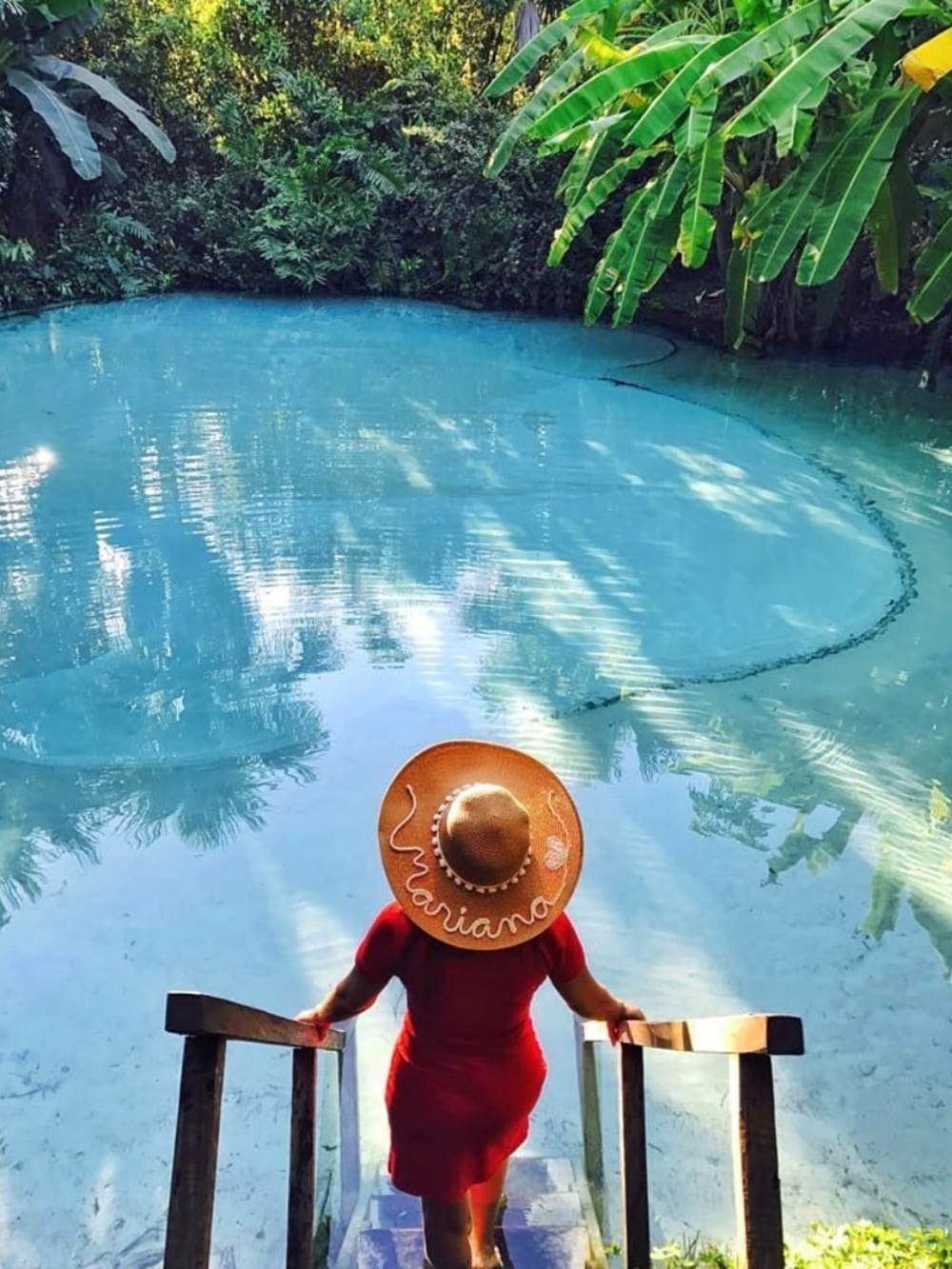
Photo: Mariana do Santos Fernandes
👉 Want to include it in your adventure? Don’t miss our 6-day Jalapão tour
8. Jalapão Capim Dourado: Nature that looks like gold
One of Jalapão’s cultural treasures is the Jalapão Capim Dourado, a plant whose golden stems shine like metal. Local artisans harvest it carefully, weaving it into jewelry, baskets, and decorative items that are admired across Brazil.
The craftwork of capim dourado is not only beautiful but also symbolic. It represents the connection between people and nature, passed down through generations. For many families, it is also a main source of income.
Visitors can buy directly from communities such as Mumbuca, ensuring that their purchase supports sustainable livelihoods. Owning a piece of capim dourado means carrying home part of Jalapão’s identity.
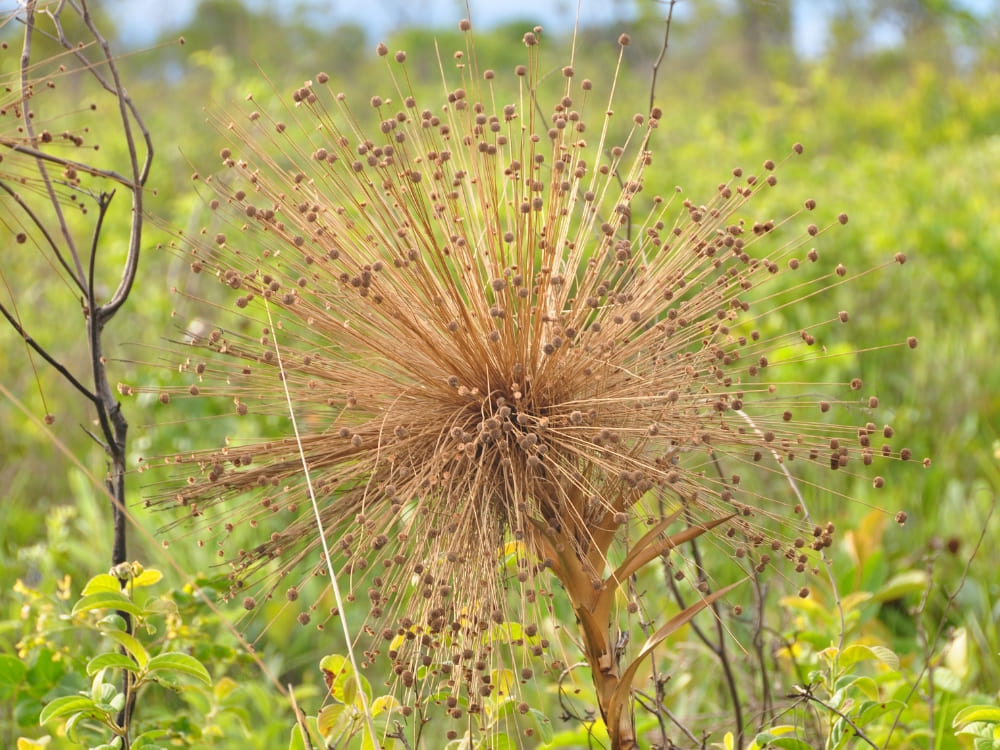
Photo: Daniel Zilenovski
9. Cachoeira da Velha and the power of the Rio Novo
Have you heard of Cachoeira da Velha? With a width of almost 100 meters, it is one of the most impressive waterfalls in Tocantins. The waterfall is formed by the Rio Novo, one of the largest rivers of drinkable water in the world.
Its horseshoe shape creates a powerful curtain of water, surrounded by forests and sandy beaches. During the dry season, travelers can even observe the falls from inside the park, enjoying unique perspectives of this natural wonder.
The Rio Novo also forms natural beaches along its course, such as Prainha do Rio Novo, where visitors can cool off in crystal-clear waters.
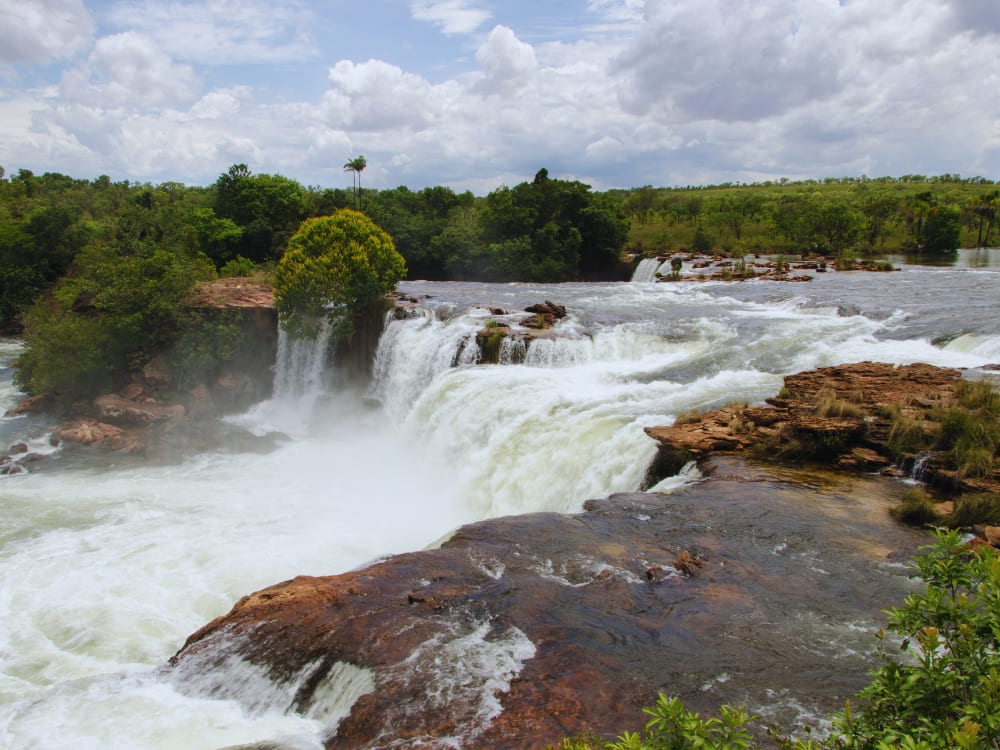
Photo: Filipe Gonzaga Ferreira
10. Rich biodiversity of fauna and flora
Finally, Jalapão is not only about landscapes but also about life. The park protects countless species of plants and animals, some found only in this part of Brazil. Birds such as the blue-and-yellow macaw and mammals like the giant anteater roam its territories.
It is also a refuge for threatened species, including the maned wolf and the extremely rare Brazilian merganser duck, with fewer than 250 individuals left worldwide. Scientists believe undiscovered species may still exist in these preserved habitats.
The flora is equally rich, with buriti palms, golden grass fields, and rare orchids coloring the scenery.
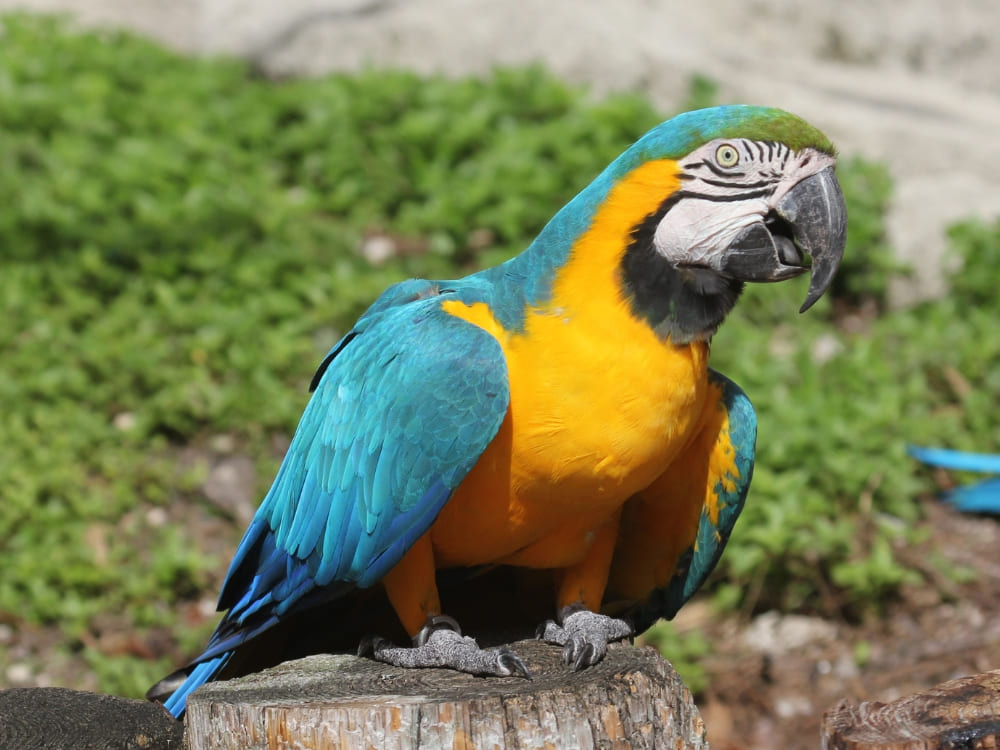
Photo: Dick Daniels
- .
Traveling With PlanetaEXO
At PlanetaEXO, every journey supports local guides, quilombola communities, and artisans who keep traditions alive.
When you choose responsible tours, you also contribute to protecting the Cerrado’s fragile ecosystems. Each adventure is carefully planned to minimize impact and maximize positive contributions.
So, are you ready to live the wonders mentioned in these 10 facts about Jalapão?
👉 Reach out to us today and start planning your journey with PlanetaEXO, where every trip makes a difference.

